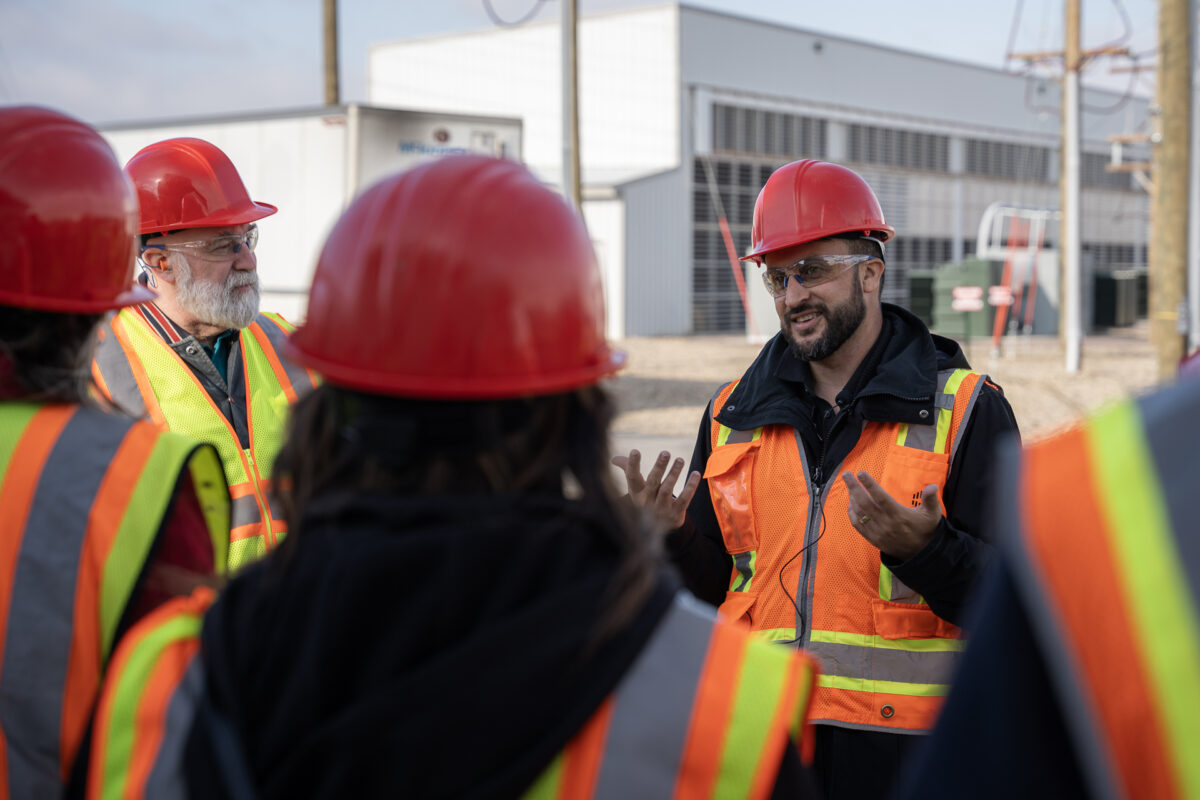(VIDEO) Applied Digital Aligns Climate and Energy to Transform Data Centers
When you flip a light switch or turn on a faucet, you rarely pause to consider the electricity traveling through transmission lines or water flowing seamlessly through underground pipes. Every time you make a call, shop online or access your medical records, there’s a silent, vital infrastructure at work. Behind these everyday conveniences are data centers, vast facilities filled with rows of servers and sophisticated cooling systems.
These modern powerhouses efficiently process and safeguard the information that drives business and keeps us connected to the world. Once known for high energy demands and environmental impact, data centers are undergoing a quiet revolution, and this transformation is reshaping how we view the digital age, not just as a driver of innovation and convenience, but as an opportunity to build a more sustainable future.
I’m Kayla Ver Helst, sustainability officer at the Bank of North Dakota. This video, part of the STAND docuseries, highlights the collaborative relationship between Applied Digital and the community of Ellendale, North Dakota.
Over the last 10 and 20 years, data centers have transformed a lot. There’s a lot more density, a lot more energy used in a much smaller amount of space, with that comes a lot more heat.
Data centers built in hotter climates require intensive cooling systems, which drives up energy demands and operational costs while amplifying environmental concerns.
So, for us coming to North Dakota, where we’re not fighting nature, we’re able to utilize the cold nature, you know, that’s outside a large part of the year. We’re able to cool the facilities much more efficiently, which means we’re not using large amounts of water, and it means we’re able to save on energy as we cool the facilities down.
One of the unique things about data center loads is they have an ability to reduce their consumption, as far as very quickly, and so, they have an ability if it’s during high pricing, you know, events on the system for energy prices or even in grid emergencies to be able to power down and reduce their consumptions or start standby generation. That really helps, you know, protect the grid and the reliability. We’re able to ramp down the power utilization at that facility very quickly. So, our Ellendale, North Dakota facility at peak usage, which is pretty much all of the time, it’s 180 megawatts.
We’re able to ramp that 180 megawatts., down to 18 megawatts in about five minutes. The benefit there is that the grid becomes much more resilient and able to react quickly to changes in demand for electricity from others than just us, and we’re able to really stabilize the grid.
We’ve got the state’s largest battery, at 100 megawatts. We need to be able to carry our entire load as we shift over from grid power to backup generation if we need to come offline from the grid.
North Dakota is a net exporting, energy state, so there’s been a lot of wind energy development that’s happened down in the southeast part of the state over the last 10 years. They’re situated very well as far as having a strong wind resource, but also there is, a lot of transmission that runs through that area historically and a lot of investments that have been made in transmission, through work that MISO has been doing.
North Dakota’s sophisticated energy transmission network also pulls in baseload generation and natural gas energy from the central part of the state and resources from South Dakota. Smart design and utilization of transmission assets created a $5.4 million return to MDU resident electric customers in 2023. In 2024, that number could be around $14 million, or about $70 per customer.
Applied Digital is transforming North Dakota’s digital landscape. Visit STAND.nd.gov for more authentic stories of sustainability and transformation from people creating real change in North Dakota’s energy, agriculture, conservation and carbon management efforts


